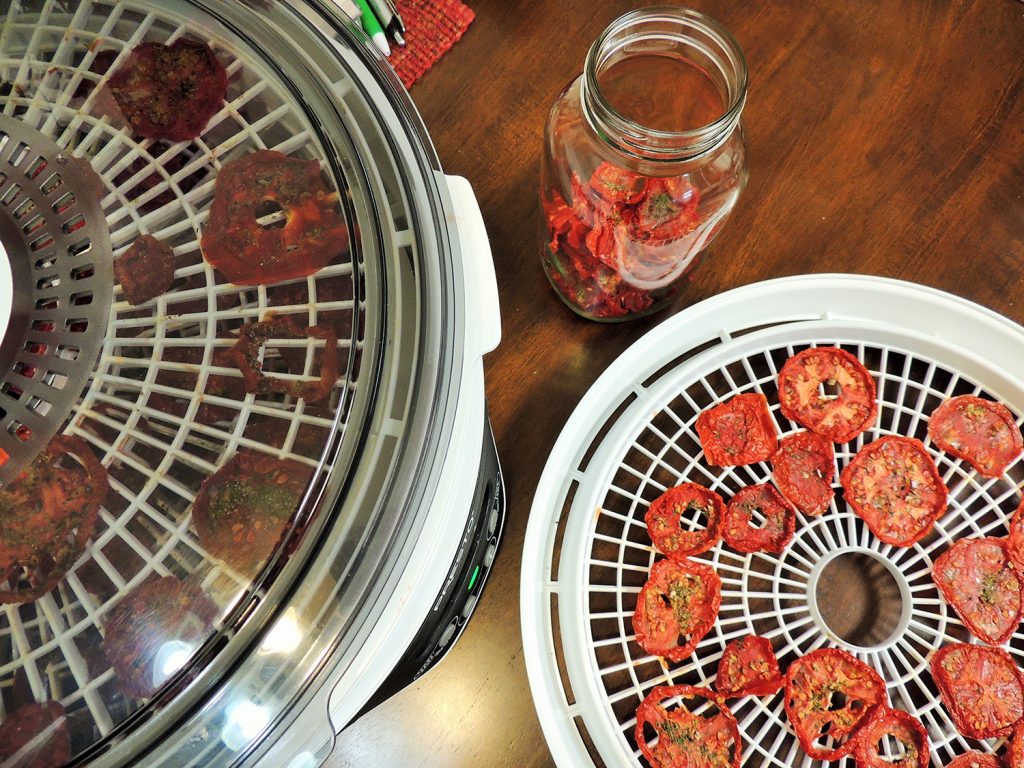
Living in the arid Southwest gives us an opportunity to dry many fruits, vegetables, and herbs instead of canning or freezing. Indigenous peoples have done this in the Rio Grande valley for centuries. Dried fruits make for great lightweight snacks, and dried vegetables are perfect for soups and stews.
Drying foods changes the nutrient content but not the calories. Even though the final dried product is small, the calories per piece remain the same as when fresh. Vitamin C is totally lost, but other vitamins and minerals are pretty much retained as long as you use the rehydrating water later when you are cooking.
Approaches to drying are different according to what you wish to preserve. Here is a little over-view of the general process:
In general, to dry foods you need heat, low humidity, and air movement. Our climate provides the first two, so our chore is to figure out racks so air can circulate around the drying food. You can make drying trays by stretching cheesecloth or nylon over racks or wooden frames. If using baking trays, they need to be perforated to allow air in from the bottom. Metals such as aluminum or zinc should be avoided as they may interact with the food being dried.
The food to be dried needs to be sliced thin so that drying will happen more quickly, preserving more of the nutrients and color. Using a mandolin will speed up this up and make sure the slices are of uniform thickness.

Blanching is the process of putting produce into boiling water for short amounts of time. This process kills enzymes and microbes in the produce and interrupts the chance for rotting. It also helps the produce to dry faster. Immediately after the produce is blanched in boiling water, it needs to be dipped in cold water to stop the cooking process.
Different foods need different drying times, as some preserve best if dried to a leathery stage and others need to be dried until crisp. All dried food needs to be stored in very airtight containers. Dried food may easily last six months to a year.
Specific information about each food type, preparation, blanching, and drying times can be found on many state’s extension service websites. A very handy one is Colorado State Extension Services.
The drying of meats as venison and elk are done by various tribal members in our area. To dry game meat, it must be cut thicker than beef for jerky, and it is dried for a prolonged period of time in special drying houses which prevent flies from entering.

